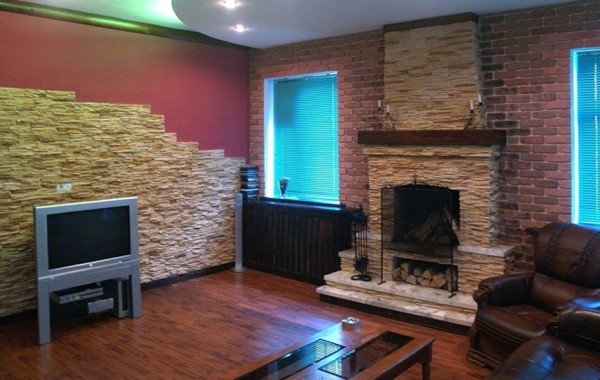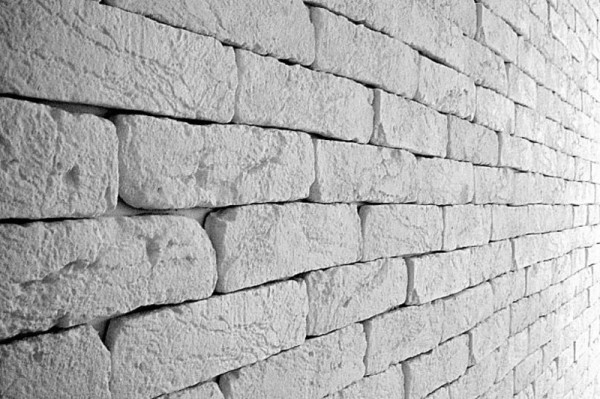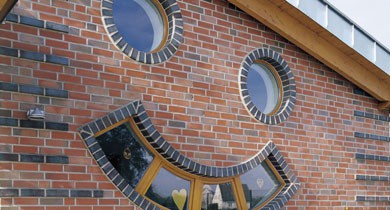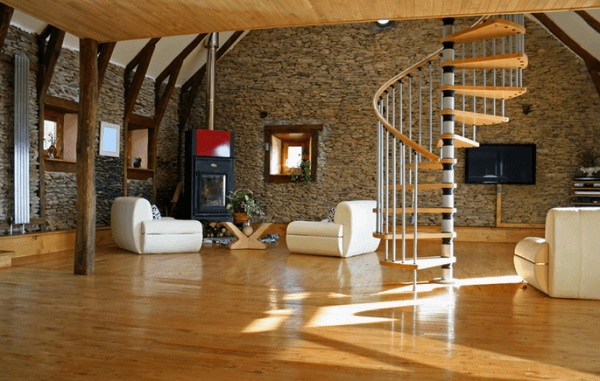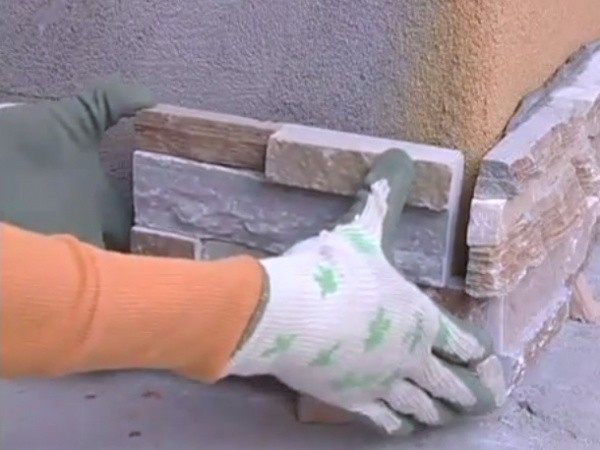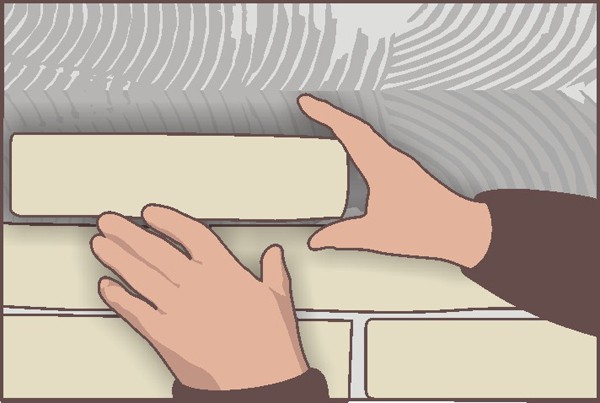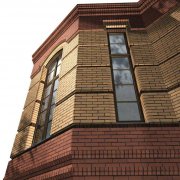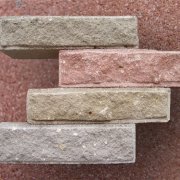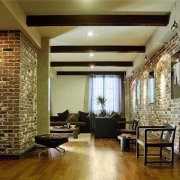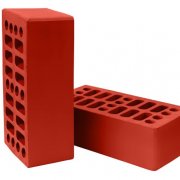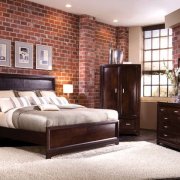Decorative brick for interior decoration and its application
Despite the wide variety of finishing materials, wall decoration with decorative brick is very popular today.
There is a different design and color scheme. Also different and materials for its manufacture.
The content of the article
Types and characteristics of decorative bricks
What are decorative bricks for interior decoration? This is a material that is one of the varieties of artificial stone.
It is made from:
- Gypsum.
- Pottery.
- Porcelain tile.
- Acrylic and synthetic.
The photo shows examples of a variety of colors, found:
- White and red (standard shades).
- Brown with shortbread.
- Red with brown.
- White with sand or gray and so on.
Note.
To date, the aged brick decorative interior brick has come into fashion. It is used in antique stylistic directions of the interior.
Gypsum decorative brick
Decorative rock under the brick for interior decoration from gypsum is the most affordable material, it is made quite simply.
The material is pretty:
- Practical.
- Reliable.
- Durable
- It has a large selection of design and sizes.
- It is not subjected to deformation under the influence of temperature extremes.
Note.
This is not to say that such material is moisture resistant. Its surface does not absorb moisture only if it is covered with a layer of a special protective agent or varnish.
There are several options for gypsum brick surfaces:
- Matte (no gloss and is usually treated with a protective substance).
- Glossy with a sheen, varnished.
- Torn, which does not have a flat top.
- Embossed.
- Convex or concave.
Characteristics:
- As for the sizes, they are diverse and can reach the size of a standard double brick.
- The main advantage of this type of decorative brick is its price, which is several times lower in comparison with ceramic material.
There is another plus, it is an independent manufacture.
Production of gypsum decorative brick
Made gypsum brick pretty simple. There is a certain instruction, according to which all actions are carried out.
In order to make such a brick with your own hands you will need:
- Plaster dough.
- Special shapes in different sizes.
- Grease for molds.
- Hardener for gypsum mortar.
- Coloring pigments of the desired shade.
Stages:
- Initially, gypsum dough is prepared, which is sold in bulk form. A certain amount of warm liquid is poured into the container and gradually a powder is poured into it, which must be constantly mixed.
- You can use a construction mixer for such work, it will only speed up the process and save time.
- If a brick of a certain shade of one color scale is needed, then coloring pigments are added to this gypsum solution.
Tip.In order to have colored streaks on the surface of the gypsum brick, the pigment is simply poured into the solution, but not thoroughly mixed. Gleams should be visible in the solution itself.
- And you can do it in another way, after pouring the gypsum dough into well-oiled special forms, pour the pigment directly there and spend a little in the solution with a wooden stick. This method has long been known to all masters.
- After the solution is poured into molds, it needs to be allowed to stand for a while. As a rule, such an interval will not take more than one day.
Then, with the help of a rubber hammer, the finished gypsum bricks are taken out.
Tip. It is best to immediately varnish them to protect the surface before installing the material.
Decorative wall decoration under a brick using plaster stone every day is becoming more popular. This is due not only to the low cost of the material, but also to its attractive appearance and ease of installation, since gypsum stone does not have a lot of weight.
Ceramic decorative brick and its properties
Decorative ceramic brick for interior decoration has been used for quite some time. He became the founder of the manufacture of such a finishing material.
All its properties are similar to ordinary ceramic tiles, which are used in the decoration of kitchen and sanitary zones.
Is he:
- Durable and reliable.
- Practical and durable.
- Does not absorb moisture and dirt.
- It does not deform under the influence of large loads.
- Able to withstand significant temperature changes.
- Frost-resistant, which makes it possible to use it not only in internal, but also in external works.
On the back, it has a perfectly flat surface, and on the other hand, it can be:
- Matt
- Glazed.
- Embossed.
- Concave and convex.
Note. Almost no torn outer surfaces on ceramic brick.
Porcelain decorative bricks for decoration
Porcelain decorative bricks for interior decoration are particularly durable. It’s all about the manufacturing process.
If ceramic is made using clay dough, which is exposed to high temperatures once or twice.
The material is made from:
- Clay test.
- Granite crumbs.
- Binder solution.
Note. Porcelain tile is also double fired, which makes it very durable.
Decorative artificial brick for porcelain stoneware:
- Moisture resistant.
- Frost resistant.
- Withstands temperature extremes.
- Its surface does not absorb dirt, as it is covered with a protective agent.
- Easy to clean with a singing agent.
- It has a wide range of colors.
- There are different sizes of this material.
Features:
- It is also worth considering that if you use porcelain stoneware for exterior decoration, then it will not fade and lose its original appearance.
- The average life is at least 30-40 years.
Note.
It is used in the interior of the kitchen area, dining room, bathroom, hallway and other rooms. Due to its strength, it is very often used as a floor covering.
Installation of decorative bricks
Brick decorative with artificial stone or ceramics begins with preparatory work on the surface. It should be smooth and clean.
Surface preparation: leveling and cleaning
Surface leveling can be performed at the moment with the use of a universal material - drywall.
It is of different types:
- Wall.
- Ceiling.
Attention! Use gypsocraton of one type or another must be strictly for its intended purpose.
It is mounted on a profile frame made of thin metal, for such actions you will need:
- Metal profiles.
- Self-tapping screws for metal.
- Screwdriver.
- Dowels.
- Hammer drill.
- Building level.
- Hacksaw for metal or grinder for cutting the desired profile size.
Stages:
- Assemble the frame directly on the surface. To do this, the main rails are mounted on the surface using dowels.
Auxiliary profiles are attached to them, which form the cells of the frame. - Drywall sheets are mounted on a metal frame using self-tapping screws. this must be done very carefully so as not to damage the gypsum dough inside the material.
- The joints of the sheets are processed with putty and, after drying, with sandpaper.
- You can smooth the surface with plaster. But such a process is longer and laborious.
At the moment they use it quite rarely. The video shows the range of work with plaster and the tool used for this. - If the surface is flat, then it will need to be qualitatively checked for defects. To do this, tap it with a rubber mallet or just by hand.
If there is a lag of the plaster from the surface, then they need to be eliminated and again a solution should be applied to these places. If there is no plaster, then you can use putty.
The principle of its application is similar, it only dries faster. After that, you need to process all the places with sandpaper.
Tip. To ensure the strength of the finishing work, it is necessary to sweep the surface with a special solution.
- If the surface was painted, then it will be difficult to fix decorative brick on it. In order to facilitate the whole process of work, you need to use a hammer to make shallow holes on it, into which cement or adhesive mortar will enter and thereby provide a bond.
You can remove the painted layer by special means. There are a large number of them today.
After that, the surface is thoroughly washed and dried and only then primed.
The process of mounting decorative bricks on the surface
Decoration with decorative bricks is performed using:
- Cement or adhesive mortar.
- Level.
- Cruciform lighthouses.
- Tile cutter.
- Roulettes or rulers.
Installation:
- Cement mortar is prepared independently. For this you need sand, water and cement.
It is advisable to use cement grade 400, which has high strength after setting. - Tile cutter is used to cut the desired size. Here it is necessary to observe safety standards and wear a protective mask at the time of cutting the material.
- The adhesive solution is sold in dry form and to give it a certain consistency, liquid is added to it.
Tip. Before such necessary actions, read the instructions on the packaging well. In some products, not cold, but warm water is added.
- The solution is applied to the surface and to the back of the material with wavy movements using a special spatula. A uniform distance between each decoration element is provided by cross-shaped beacons.
- After installation, all seams are treated with decorative putty. To avoid this, coloring pigments are added to the adhesive or cement mortar and mixed thoroughly with a construction mixer.
Decoration with a decorative brick in its principle and actions resembles the laying of tiles on the surface. Each element before fixing is checked and set according to the level.
There is nothing complicated in the work and you can do it yourself.
